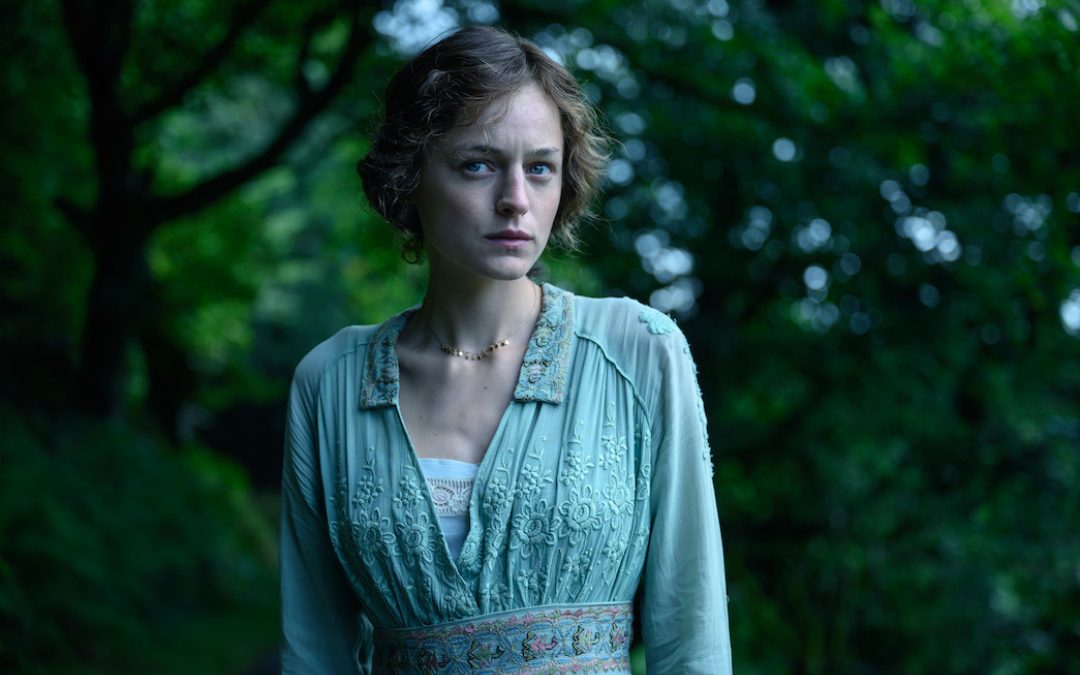An evaluation of Lady Chatterley’s Lover The film adaptation of Lady Chatterley’s Lover, which was directed by Laure de Clermont-Tonnerre, tries to convey the agony and excitement of the original D. H. Lawrence book.
In the famous D.H. Lawrence novel’s translation by Laure de Clermont-Tonnerre, Emma Corrin portrays Constance Chatterley, also known as “Connie,” an impetuous and sensitive lady who is married to Sir Lord Clifford Chatterley (Matthew Duckett).
The topic of why he “married a baronet” is posed in the opening scenes, subtly establishing that the marriage is seen as a basis for generating an heir. Constance reassures him that it’s okay after Clifford apologizes in private.
Sir Clifford is called to the First World War front lines and is now confined to a chair due to crippling wounds. But it doesn’t seem to bother her at all. Until the absence of physical and emotional intimacy begins to slowly overtake her.
One of the most controversial books ever written was D. H. Lawrence’s Lady Chatterley’s Lover. Its open discussion of feminine pleasure and portrayal of a working-class man and an upper-class woman led to it being deemed unprintable and outlawed in several countries.
But by meticulously portraying it as a love tale, the Netflix adaptation virtually destroys the novel’s forbidden joy. Comparatively, everything appears organized and neat.
The last two statements of the movie are said by Mrs. Bolton, Lord Clifford’s caregiver (Joely Richardson), who interrupts the raucous discussion of the occurrences that have taken place.
Connie will run into the handsome gamekeeper Mellors (Jack O’Connell), who will gradually transform into an addiction that might jeopardize their existence forever.
Not that I don’t enjoy a good cerebral period drama. But I almost wanted to give this movie some time to build its world because of the superb performances, elaborate production design, and historical intricacies. Lawrence’s prose is hauntingly pertinent today and has all the elements needed for an innovative and enjoyable adaptation.
This interpretation lacks a sense of purpose and is unable to convey the seriousness and emotional intimacy of the central relationship.
Even when faced with direct confrontation, Lady Chatterley’s Lover seemed impeccably polite and composed. It’s rare for Netflix to have so many graphic sex scenes, yet none of them are strong or sensitive enough.
The picture is most negatively impacted by the lead actors’ blatant lack of chemistry. Particularly in the first few episodes in which Constance and Mellors are first revealed and share a location in the woods, there isn’t even a trace of forbidden passion to be found in the room.


